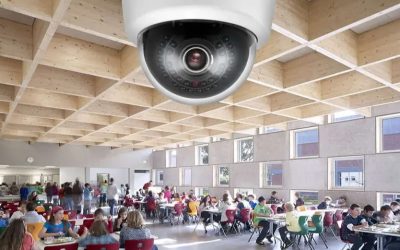 The three most common methods of Wi-Fi protection are WEP (Wired Equivalent Privacy), WPA (Wi-Fi Protected Access), and WPA2 (Wi-Fi-Potected Access Version 2). WPA2 provides the best security. Wireless internet is around everywhere, and building managers are relying on wireless control systems to protect their facilities. Wireless access control systems prevent unwanted persons from hacking your wireless network and encrypting your data. Just remember even though you have wireless systems those highly skilled and resourceful hackers still try to hijack and take control of your wireless network. The following are the 3 latest Wi-Fi network security protocols…
The three most common methods of Wi-Fi protection are WEP (Wired Equivalent Privacy), WPA (Wi-Fi Protected Access), and WPA2 (Wi-Fi-Potected Access Version 2). WPA2 provides the best security. Wireless internet is around everywhere, and building managers are relying on wireless control systems to protect their facilities. Wireless access control systems prevent unwanted persons from hacking your wireless network and encrypting your data. Just remember even though you have wireless systems those highly skilled and resourceful hackers still try to hijack and take control of your wireless network. The following are the 3 latest Wi-Fi network security protocols…
WEP (Wired Equivalent Privacy)
The wired equivalent privacy, or WEP, is part of the IEEE 802.11 standard designed to keep traffic sent through wireless networks more secure. It was created to help prevent cyberattacks, such as man-in-the-middle (MiiM) attacks, from being successful. WEP was developed as a WiFi security standard in 1999. It was the first security protocol ever used for wireless networks. Wired Equivalent Privacy (WEP) used to be the standard form of encryption, but it’s no longer secure because computing power has improved and hackers can now crack it easily. WEP security encrypts with a static key — one of the biggest reasons it’s no longer considered secure. The wifi alliance officially abandoned WEP in 2004. If you have WEP it needs to be upgraded or replaced.
WPA (Wi-Fi-Potected Access)
Wi-Fi Protected Access (WPA) is a security standard for computing devices equipped with wireless internet connections. WPA was developed by the Wi-Fi Alliance to provide more sophisticated data encryption and better user authentication than Wired Equivalent Privacy (WEP), the original Wi-Fi security standard. WPA was only intended as an intermediate measure because WEP was abandoned in 2004. As such it also displayed security flaws and exposed users’ wireless networks to hackers.
WPA2 (Wi-Fi Protected Access Version 2)
WPA2 was developed to enhance wireless security over WPA. WPA2 was developed based on the use of a stronger encryption method called AES which stands for Advanced Encryption Standard technology. The U. S. government uses an AES encryption algorithm to encrypt sensitive government data and protect classified information. WPA2 became the industry standard in 2004 and in 2006. Unfortunately, WPA2 shows flaws and vulnerabilities. A hacker located within the range of a Wifi network can carry out a key reinstallation attack and access data. Therefore it is insecure. It is better than WEP and WPA but should be replaced if you are still using it.
WPA3 (WiFi Protected Access Version 3)
This is the latest generation of WiFi security. It is the third iteration of a security certification standard developed by the Wi-Fi Alliance. WPA3 is the latest updated implementation of WPA2, which has been in use since 2004. The Wi-Fi Alliance began certifying WPA3-approved products in 2018. WPA3 uses a 128-bit encryption just like WPA2 but instead of increasing the encryption strength, WPA3 focuses on additional ways to protect users against attacks. If a network has a weak password, WPA3 will provide a second line of defense. WPA3 uses SAE hadshake designed to protect networks against dictionary attacks. All these steps make it much more time-consuming for hackers to carry out an attack and crack your password.
The best way to protect your wireless network is to use the latest security protocol. New protocols will most likely continue to be invented to solve standard flaws. So make sure to keep an eye on the latest updates in the security field. Stay one step ahead of the hackers.
Partnering with a trusted security vendor is the best way to ensure your business is secure.
Contact Us (877-762-6460) for a free consultation!
View Past Projects
—
 About Facility Protection Group
About Facility Protection Group
Facility Protection Group is a Certified Systems Integrator based in the Southeastern United States, specializing in electronic security services supporting both traditional and cloud based Access Control (Card Access), Video Surveillance / CCTV, Audio / Video Intercoms, and Intrusion Alarm Systems. Founded in 2018 and located in Tampa, Florida; Facility Protection Group has assembled a team that has a tremendous wealth of industry knowledge and experience.

 About Facility Protection Group
About Facility Protection Group


